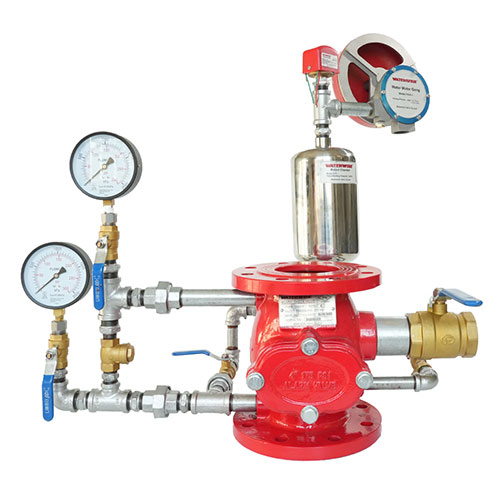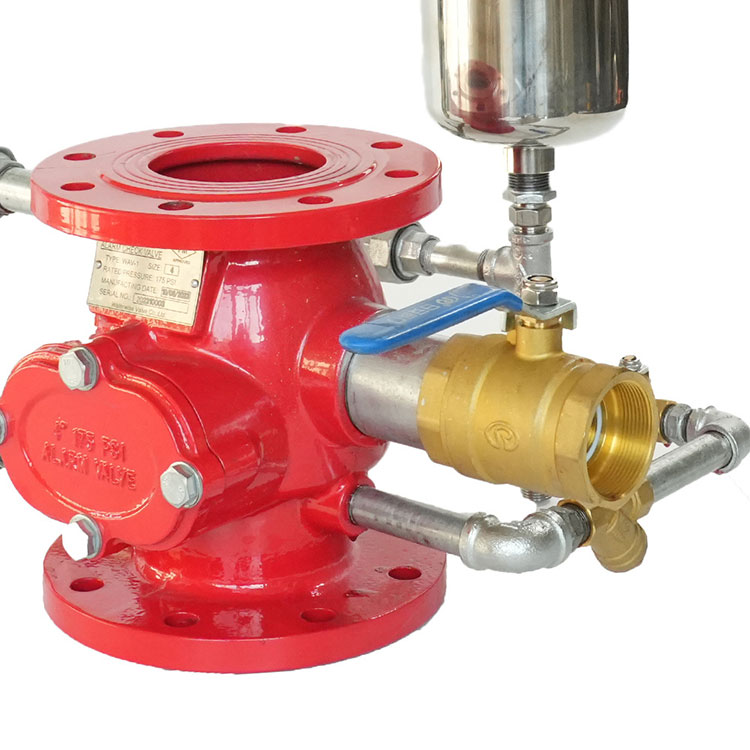

A wet alarm check valve is a component commonly used in fire protection systems, particularly in sprinkler systems. Its primary function is to prevent water from flowing back into the main water supply when there is a pressure drop or loss in the system. The wet alarm check valve is a crucial part of the overall fire protection system, ensuring the effectiveness and reliability of sprinkler systems.

The main purpose of a wet alarm check valve is to prevent water from flowing back into the municipal water supply or the main water source. This backflow prevention is essential to avoid contamination of the public water system.
The valve is designed to activate when water flows through the sprinkler system. When a sprinkler head opens due to heat from a fire, water flows through the system, causing the wet alarm check valve to open and allow water to reach the sprinklers.
In addition to preventing backflow, the wet alarm check valve often includes an alarm feature. The opening of the valve triggers an alarm, signaling that the sprinkler system is activated and water is flowing. This alarm alerts building occupants and emergency responders to the presence of a fire.

Wet alarm check valves are typically installed in areas of a building where sprinklers are present. They are part of the larger fire protection system and are strategically placed to ensure effective water distribution in the event of a fire.
These valves are designed to be reliable and require minimal maintenance. Regular inspections and testing are recommended to ensure that the valve functions correctly when needed.
Wet alarm check valves operate based on pressure differentials. When water pressure on the supply side is greater than the pressure on the system side, the valve remains closed. However, when the pressure on the system side drops (due to water flowing through the sprinklers), the valve opens to allow water to flow.
It's important to note that the wet alarm check valve is just one component of a comprehensive fire protection system, which may also include other elements such as fire pumps, piping, and sprinklers. Compliance with local building codes and regular inspections by qualified professionals are essential to ensure the proper functioning of the entire fire protection system.
